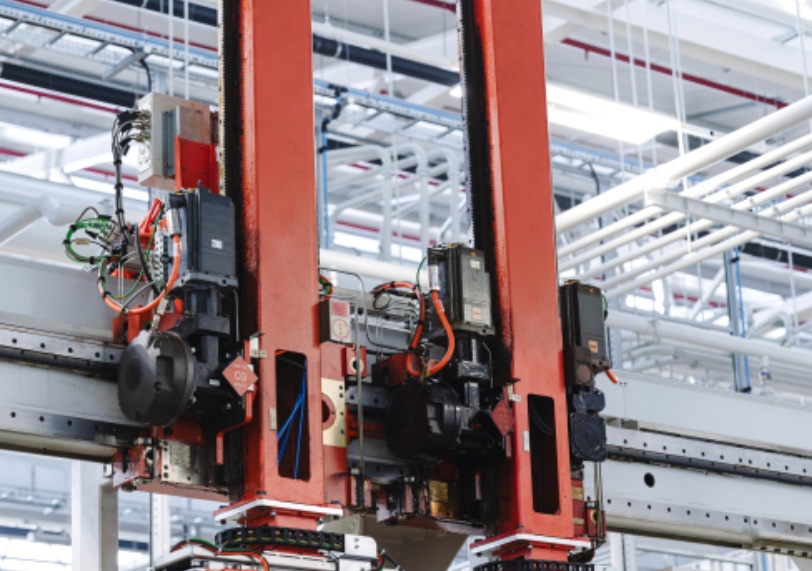The release of The National Blueprint for a Clean & Competitive Industrial Sector by the U.S. Department of Energy (DOE) and the White House Office of Science and Technology Policy (OSTP) signals a significant shift in U.S. industrial policy. With input from federal agencies, the Blueprint outlines five core strategies designed to transform the American manufacturing sector, reducing greenhouse gas (GHG) emissions while bolstering economic growth and international competitiveness. This article explores the opportunities and challenges presented by this framework and its implications for the U.S. economy and global leadership in sustainable industrial innovation.
A Foundation for Economic Growth and Job Creation
The manufacturing sector accounts for 12% of the U.S. Gross Domestic Product (GDP), employing millions and driving innovation across industries. Many of these jobs provide competitive wages and are accessible to workers without a four-year degree, making manufacturing a pillar of economic opportunity. Deputy Secretary of Energy David M. Turk emphasized the broader impact of the Blueprint:
“Implementing the strategies outlined in this Blueprint will improve public health, accelerate innovation to support U.S. international competitiveness, and create even more good-paying U.S. jobs.”
Beyond economic benefits, robust domestic manufacturing enhances national security by reducing dependency on foreign suppliers and mitigating supply chain disruptions. However, the sector also accounts for approximately 20% of annual domestic GHG emissions, making it a key target for decarbonization. By aligning economic priorities with environmental goals, the Blueprint aims to leverage the dual opportunities of reducing emissions and fostering industrial innovation.

The Five Pillars of Transformation
The Blueprint identifies five strategies to guide this transformation:
- Accelerating Deployment of Low-Carbon Solutions
A priority for the near term, this strategy focuses on scaling commercially available, cost-effective technologies. Investments in clean energy solutions such as electrification and carbon capture could unlock substantial reductions in emissions while improving operational efficiency. - De-Risking Emerging Technologies
Demonstrating emerging solutions at a commercial scale is essential to address uncertainties around cost, reliability, and scalability. Government-backed pilot projects and partnerships with the private sector can facilitate technology adoption, enabling a smoother transition to sustainable industrial practices. - Data-Driven Efficiency Gains
Harnessing data to identify emissions hotspots and efficiency opportunities is critical for improving industrial performance. Enhanced monitoring and reporting systems can drive accountability and optimize resource use, contributing to significant GHG reductions. - Research and Innovation for Transformative Solutions
Developing next-generation technologies, such as hydrogen-based manufacturing processes or advanced materials, could lead to deep decarbonization. Public and private R&D investments will be vital for ensuring the U.S. remains at the forefront of these innovations. - Life Cycle Integration
Reducing embodied GHG emissions across product lifecycles—encompassing production, use, and disposal—will minimize waste and lower environmental impact. This approach aligns with global trends toward circular economies and sustainable supply chains.
Catalyzing Global Competitiveness in Emerging Markets
As countries worldwide vie for leadership in clean energy technologies, the U.S. faces a critical opportunity to solidify its position as a global manufacturing powerhouse. Investments in low-carbon industrial technology are not only environmental imperatives but also strategic economic bets. For example, expanding hydrogen production or advancing carbon capture utilization and storage (CCUS) technologies could secure a competitive edge in global markets projected to exceed $1 trillion by 2030.
Additionally, the Blueprint supports domestic manufacturing by emphasizing the economic benefits of pollution reduction, such as lower health care costs and increased productivity. As American firms adopt these strategies, they could also gain access to rapidly growing international markets that prioritize sustainable products and processes.
Challenges and Considerations
While the Blueprint provides a robust framework, its success hinges on several factors. Public-private collaboration will be crucial, as the private sector must lead technology deployment while leveraging federal incentives. Furthermore, aligning short-term actions with long-term goals will require careful coordination across agencies and industries.
Economic equity is another critical concern. Policymakers must ensure that the transition benefits all communities, particularly those historically reliant on carbon-intensive industries. Addressing these challenges head-on will determine the initiative’s ultimate impact on both domestic and global scales.
Climate Insider Analysis
The National Blueprint for a Clean & Competitive Industrial Sector offers a bold vision for transforming U.S. manufacturing into a model of sustainability and innovation. Key takeaways include:
- Economic Opportunities: The U.S. manufacturing sector can strengthen its global competitiveness while creating millions of good-paying jobs through investments in clean technologies.
- Environmental Impact: With the sector responsible for 20% of domestic GHG emissions, implementing the Blueprint’s strategies could substantially reduce the nation’s carbon footprint.
- Global Implications: By leading in clean energy innovation, the U.S. can set international standards and capture significant shares of emerging markets.
- Challenges to Address: Ensuring equitable implementation and managing the transition for legacy industries will require sustained effort and collaboration.
As the U.S. moves to implement this ambitious agenda, the Blueprint serves as a critical roadmap for aligning industrial growth with sustainability goals, paving the way for a cleaner, more competitive future.
Source: U.S. Department of Energy
Featured Image: Credit: U.S. Department of Energy








